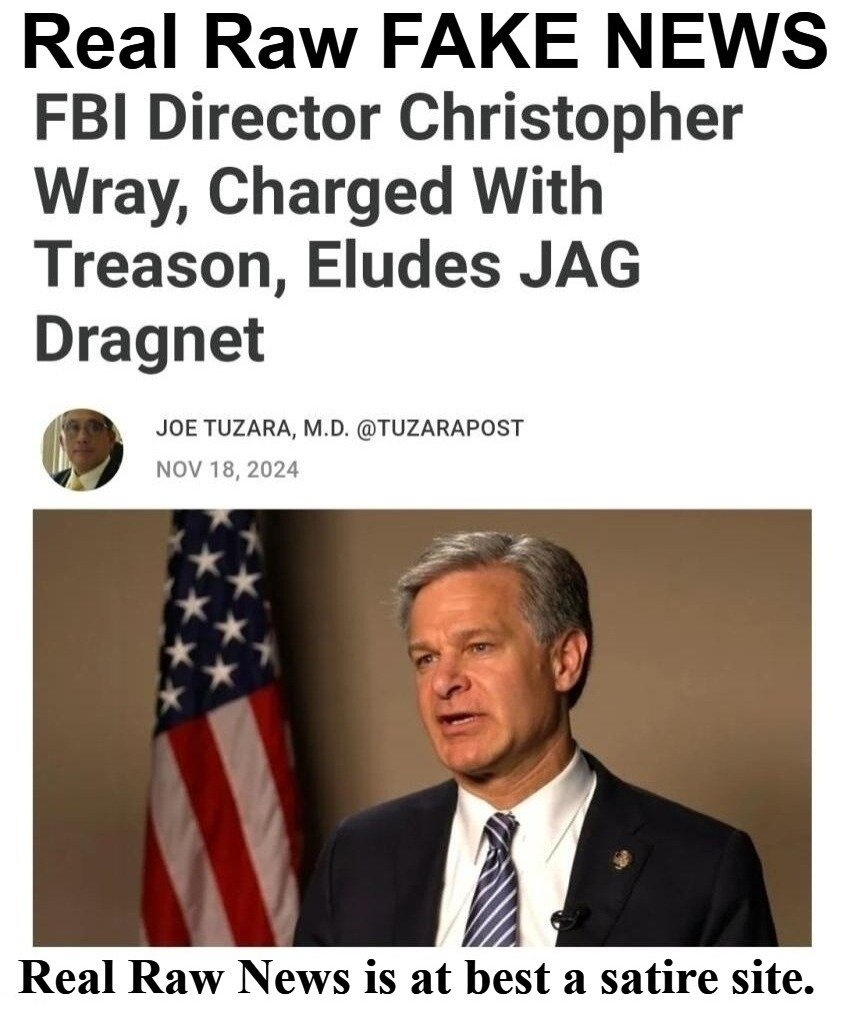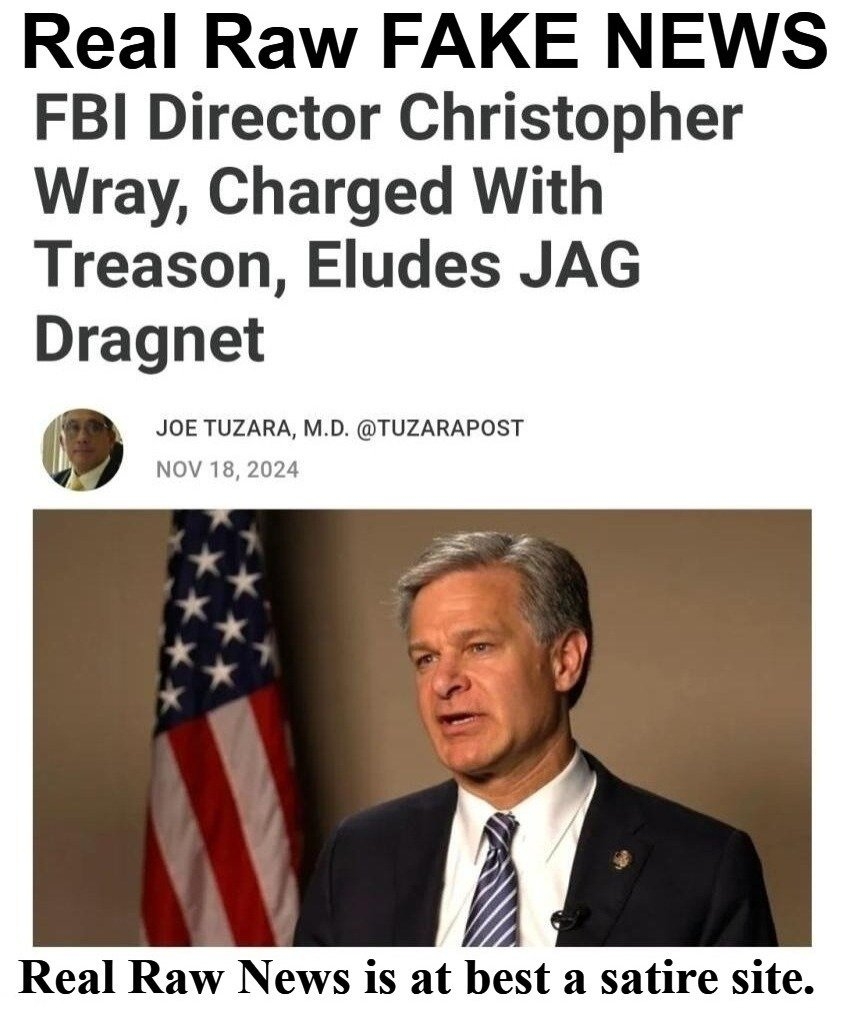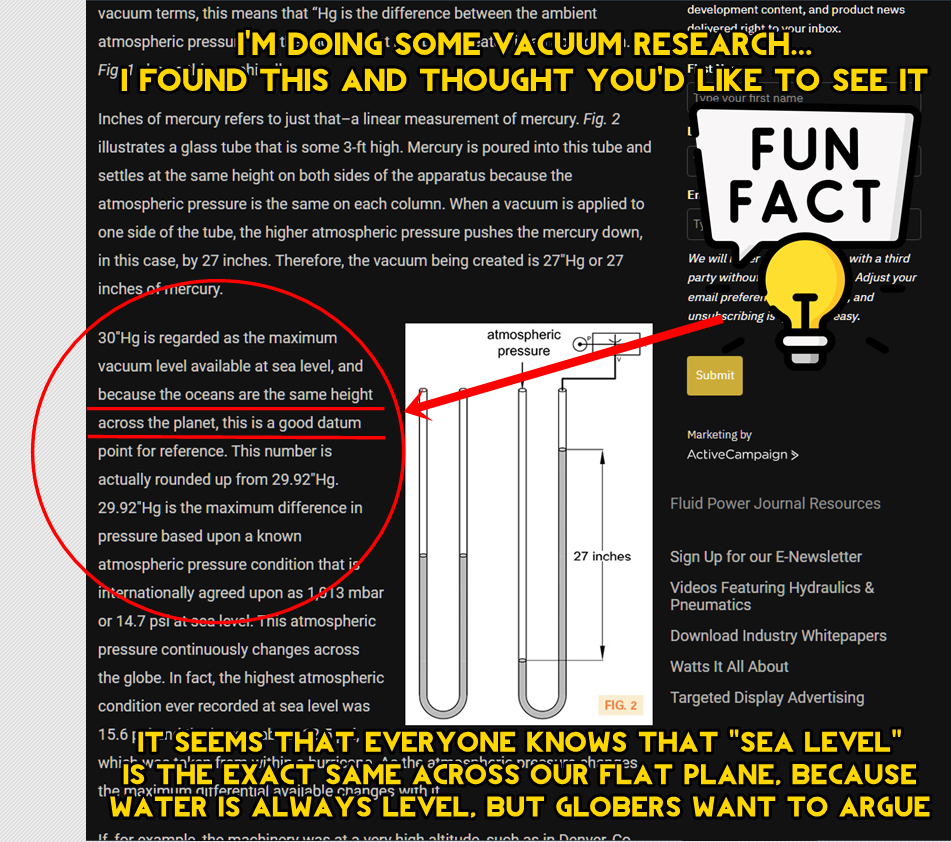I was doing some research on vacuum and happened across this little gem....
To me it's just COMMON SENSE that "Sea Level" is an ALTITUDE applicable across the entire earth!
I mean come on folks!
Water is ALWAYS flat and level
Therefore "Sea-Level" is the same across the entire earth!
If the oceans were to rise, then sea-level would change!
It says it right here in this "Guide to vacuum measurement" that
"The oceans across the world are the same height"
EXCEPT it calls the earth a "Planet" when it is actually a PLANE!
When your feet are in the water in Japan, you are at the SAME ALTITUDE as a guy whose feet are in the water in the USA!
At least ACT LIKE you have some sense!
Water is demonstrably FLAT and LEVEL when not manipulated, that is why they actually have a thing called a "water level"
Yet
#NASA and "Public
#Education" has brainwashed you into believing that you live on a whirling, twirling, water ball, where your feet are DOWN as people's feet in Australia are pointing UP at your feet!
That is the DUMBEST THING I'VE EVER HEARD!
I was right there with you for a while...
Thank goodness I came to my senses and realized that we live
in a world of Satanic LIES, and Satanic LIARS.
Give ALL GLORY TO THE FATHER!
And thank Him for creating our beautiful and FLAT world!
And remember.... THERE IS NOTHING NEW UNDER THE SUN!
HOW would anyone know what is "under the sun" in the heliocentric fairytale?
There's no "up" and "down" in "space"
These things are created by
#Buoyancy,
#Density, and electrostatic charge!
"Space" is FAKE... but if it were real, there'd be no "up" or "down"
Ecclesiastes 1:9
“The thing that hath been, it is that which shall be; and that which is done is that which shall be done: and there is no new thing under the sun.”
Wake up to the TRUTH!
I was doing some research on vacuum and happened across this little gem....
To me it's just COMMON SENSE that "Sea Level" is an ALTITUDE applicable across the entire earth!
I mean come on folks!
Water is ALWAYS flat and level
Therefore "Sea-Level" is the same across the entire earth!
If the oceans were to rise, then sea-level would change!
It says it right here in this "Guide to vacuum measurement" that
"The oceans across the world are the same height"
EXCEPT it calls the earth a "Planet" when it is actually a PLANE!
When your feet are in the water in Japan, you are at the SAME ALTITUDE as a guy whose feet are in the water in the USA!
At least ACT LIKE you have some sense!
Water is demonstrably FLAT and LEVEL when not manipulated, that is why they actually have a thing called a "water level"
Yet #NASA and "Public #Education" has brainwashed you into believing that you live on a whirling, twirling, water ball, where your feet are DOWN as people's feet in Australia are pointing UP at your feet!
That is the DUMBEST THING I'VE EVER HEARD!
I was right there with you for a while...
Thank goodness I came to my senses and realized that we live
in a world of Satanic LIES, and Satanic LIARS.
Give ALL GLORY TO THE FATHER!
And thank Him for creating our beautiful and FLAT world!
And remember.... THERE IS NOTHING NEW UNDER THE SUN!
HOW would anyone know what is "under the sun" in the heliocentric fairytale?
There's no "up" and "down" in "space"
These things are created by #Buoyancy, #Density, and electrostatic charge!
"Space" is FAKE... but if it were real, there'd be no "up" or "down"
Ecclesiastes 1:9
“The thing that hath been, it is that which shall be; and that which is done is that which shall be done: and there is no new thing under the sun.”
Wake up to the TRUTH!














